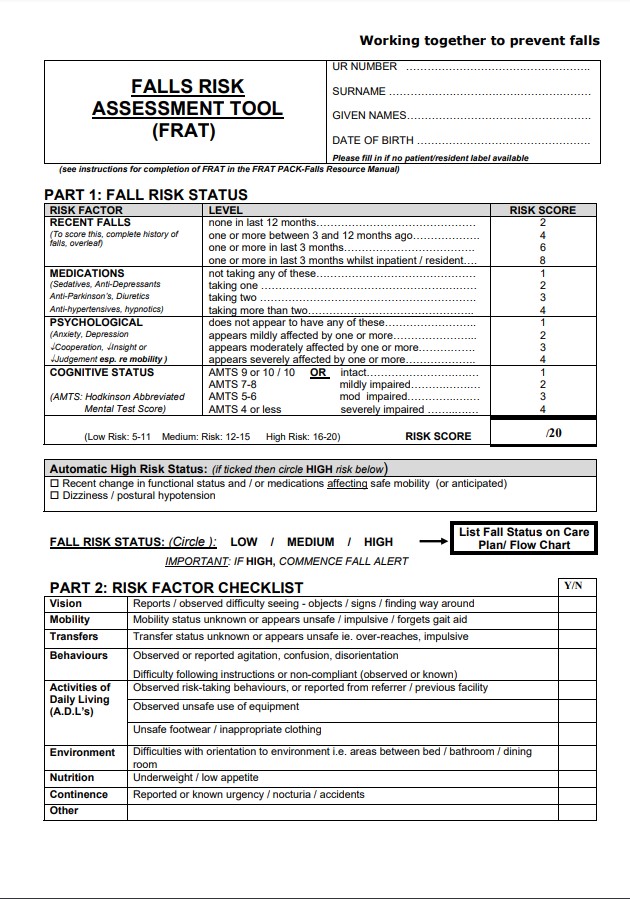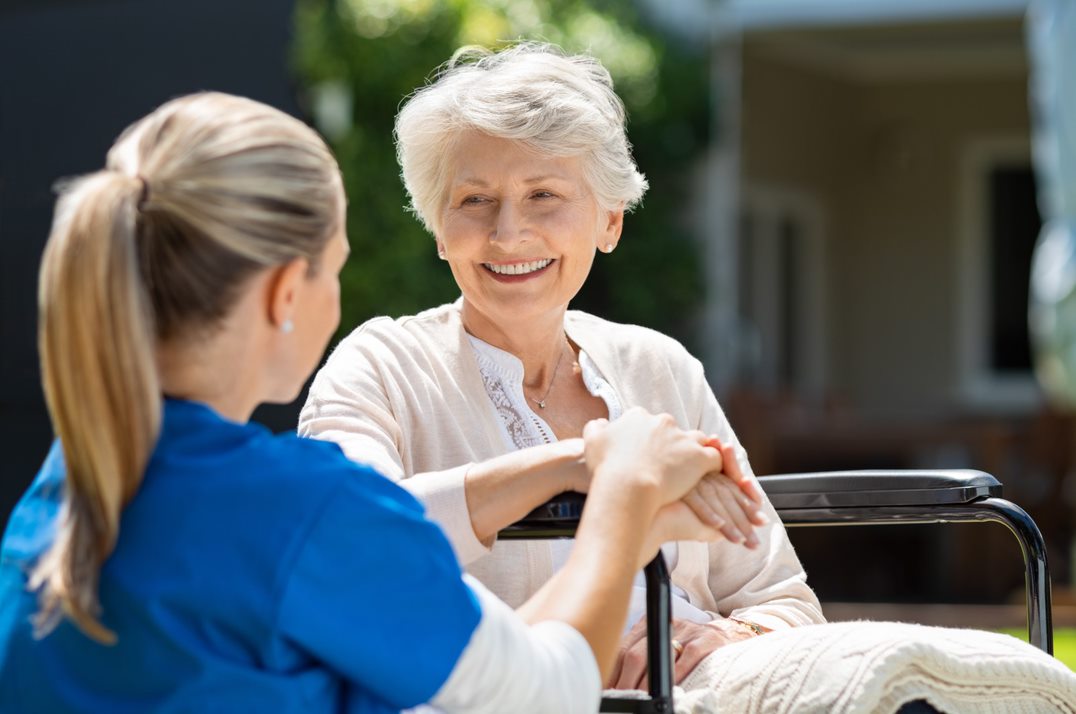The Single Strategy To Use For Dementia Fall Risk
The Single Strategy To Use For Dementia Fall Risk
Blog Article
All About Dementia Fall Risk
Table of ContentsExcitement About Dementia Fall RiskAbout Dementia Fall RiskExcitement About Dementia Fall RiskAbout Dementia Fall RiskRumored Buzz on Dementia Fall Risk
The FRAT has three sections: fall risk condition, threat factor checklist, and action strategy. A Fall Risk Standing includes information regarding background of current falls, drugs, mental and cognitive status of the person - Dementia Fall Risk.If the patient scores on a risk aspect, the matching number of factors are counted to the individual's loss threat rating in the box to the far. If a client's autumn danger rating amounts to five or higher, the individual goes to high risk for falls. If the individual ratings just four factors or lower, they are still at some danger of dropping, and the nurse ought to use their best professional analysis to manage all loss threat aspects as component of a holistic care strategy.
These common techniques, in basic, help establish a risk-free environment that lowers unexpected falls and defines core preventive actions for all individuals. Indications are important for patients at danger for drops.
The 4-Minute Rule for Dementia Fall Risk
Wristbands need to include the person's last and initial name, date of birth, and NHS number in the UK. Only red color needs to be made use of to signify unique client status.
Items that are too much might need the individual to get to out or ambulate needlessly and can possibly be a danger or add to falls. Helps avoid the client from heading out of bed without any support. Registered nurses respond to fallers' phone call lights faster than they do to lights started by non-fallers.
Visual disability can considerably trigger falls. Hip pads, when used effectively, might reduce a hip fracture when loss occurs. Maintaining the beds closer to the flooring decreases the threat of drops and severe injury. Putting the cushion on the floor considerably lowers fall threat in some health care setups. Low beds are developed to decrease the range a client falls after relocating out of bed.
The smart Trick of Dementia Fall Risk That Nobody is Talking About
People who are tall and with weak leg muscles that attempt to remain on the bed from a standing position are likely to fall onto the bed since it's too reduced for them to lower themselves securely. If a tall individual efforts to get up from a low bed without assistance, the individual is likely to drop back down onto the bed or miss the bed and fall onto the floor.
They're developed to advertise prompt rescue, not to prevent drops from bed. Apart from bed alarm systems, boosted supervision for high-risk patients also might aid stop falls.

Patients with an evasion gait boost fall possibilities dramatically. To decrease autumn threat, shoes ought to be with a little to no heel, slim soles with slip-resistant walk, and sustain the ankle joints. Advise client to utilize nonskid socks to avoid the feet from gliding upon standing. Urge people to use suitable, well-fitting shoesnot nonskid socks for motion.
The 5-Minute Rule for Dementia Fall Risk
People, particularly older grownups, have actually minimized aesthetic capability. Lights an unfamiliar setting assists raise exposure if the patient have to stand up during the night. In a research, homes with appropriate lighting report less drops (Ramulu et al., 2021). Renovation in illumination at home may decrease loss rates in older grownups (Dementia Fall Risk). Making use of gait belts by all healthcare providers can promote safety when assisting people with transfers from bed to chair.

Sitters are efficient for assuring a secure, secured, and risk-free environment. Studies demonstrated really low-certainty evidence that caretakers reduce loss threat in severe care hospitals and just moderate-certainty that alternatives like video clip monitoring can lower caretaker use without increasing loss danger, find more info recommending that sitters are not as valuable as at first believed (Greely et al., 2020).
Not known Details About Dementia Fall Risk

Raised physical fitness decreases look at here now the danger for drops and limits injury that is endured when loss transpires. Land and water-based exercise programs may be likewise beneficial on balance and gait and thus decrease the danger for falls. Water exercise may contribute a favorable advantage on equilibrium and stride for females 65 years and older.
Chair Surge Exercise is a straightforward sit-to-stand exercise that assists reinforce the muscular tissues in the thighs and butts and enhances mobility and independence. The goal is to do Chair Rise exercises without using hands as the client ends up being more powerful. See sources area for an in-depth guideline on just how to carry out Chair Rise exercise.
Report this page